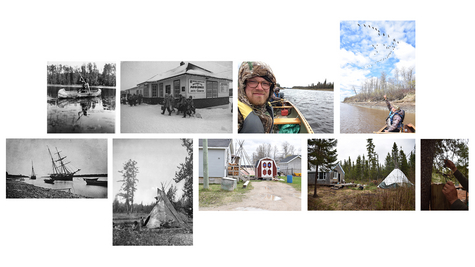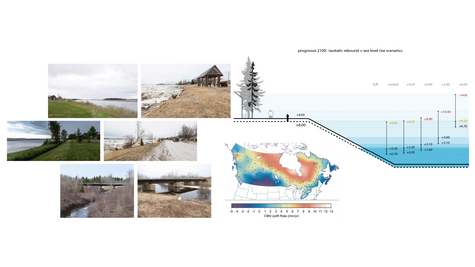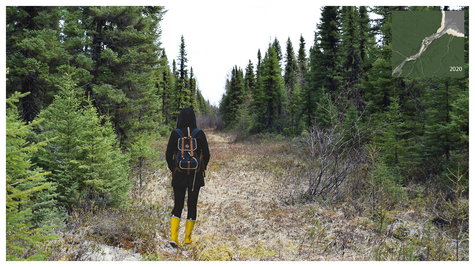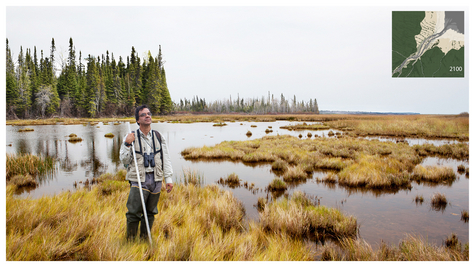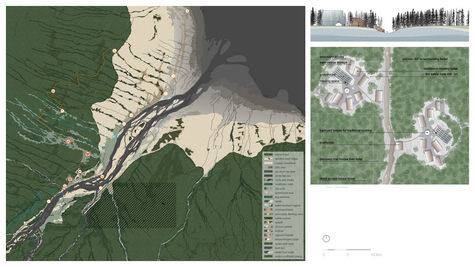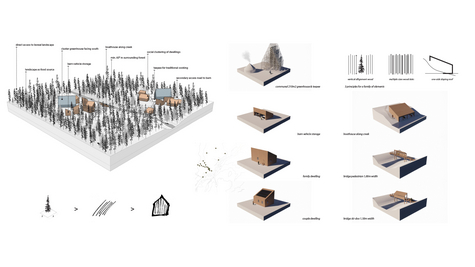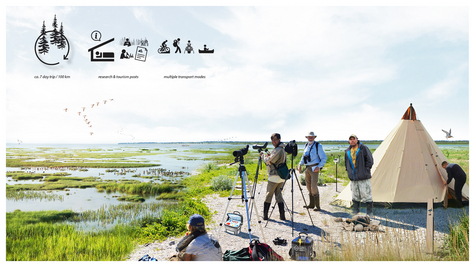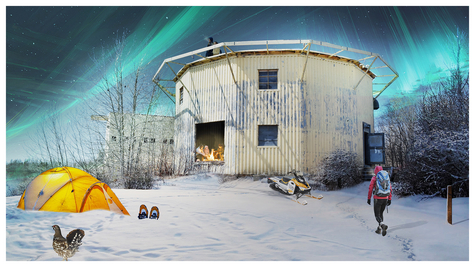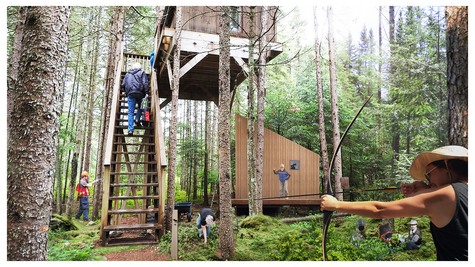Silko van der Vliet
Moose River Delta Cree
Rediscovering the boreal landscape and enhancing indigenous culture
The deltas of the swampy boreal forest along Canada's James Bay are home to indigenous Cree people. This coastal landscape and its inhabitants will also be affected by climate change. Nature takes its course, but how can the residents adapt to the changes in the landscape: will they leave or stay and adapt their habitation and lifestyle?
In the past century, Canada tried to socially displace indigenous children with a residential school system. They had to assimilate into the Euro-Canadian way of life. A traumatic experience. The Canadian government apologized in 2008. In the meantime, the indigenous communities are recovering their traditions, language and knowledge. The change from nomadic life to a 'permanent place of residence' estranged their relationship with the natural landscape. However, climate change creates opportunities to revive this relationship and rediscover the boreal forest.
The James Bay is an inland sea that experiences a full cycle of freezing and melting every year. This cycle determines the functioning of the ecosystems surrounding it. Cree communities have adapted to this, as most of the landscape is only accessible during the frozen state in winter.
In the spring, meltwater and ice accumulate in the James Bay deltas. Resulting in unusually more spring tides, where up to 6 meters difference from high tide has been measured. The ice then reaches the top of the riverbank. A minimal sea level rise of 1 meter would already result in water and ice flooding the current residential and habitat area. Civil engineering solutions, such as dykes and stilt houses, are vulnerable in this context. The salty seawater will ensure that the currently wooded riverbanks change into an open salt marsh area with rugged thickets. A unique opportunity to redesign the changing landscape.
This graduation proposal outlines a relocation strategy for the Moosonee and Moose Factory communities in the Moose River delta. This strategy responds to the hypothetical changes in the landscape and builds upon the legacy of Cree culture.
Stable riverbanks of clay and gravel form the basis for the relocation. The proposal is based on a new location in the dynamic forest edge determined by flooding. The forest edge as a link between life in the boreal forest and the tidal area with flourishing flora and fauna. Two landscape types that are fundamental in Cree culture.
The human scale of spaces along the Moose River tributaries provides a suitable settlement site and ensures transport across the river to the coast. A sustainable and socio-spatial design of settlement clusters with more direct access to the landscape for everyone, fosters opportunities for rediscovery of the forest to be prepared for a sustainable future. Finally, the local economy can be given a boost by setting up ecotourism and profiling the area as a fundamental research area for the landscape as a 'carbon sink' in the global climate crisis. Hopefully, this plan will also inspire other Cree communities to see the landscape as a means of enhancing their culture.
Graduation date: 28 oktober 2020
Graduation committee: Jana Crepon (mentor), Lodewijk van Nieuwenhuijze, Sjef Jansen
Additional members for the exam: Berdie Olthof, Marieke Timmermans


